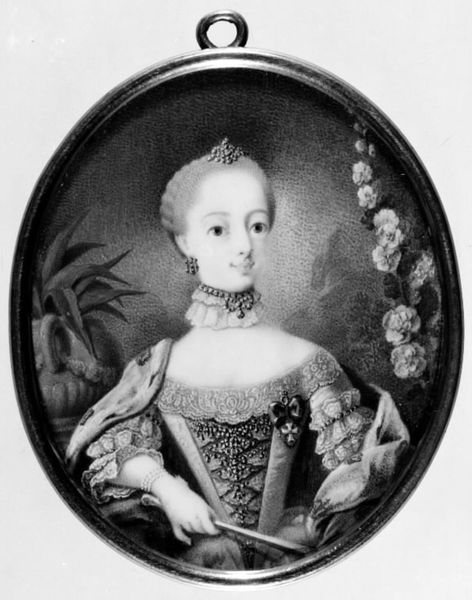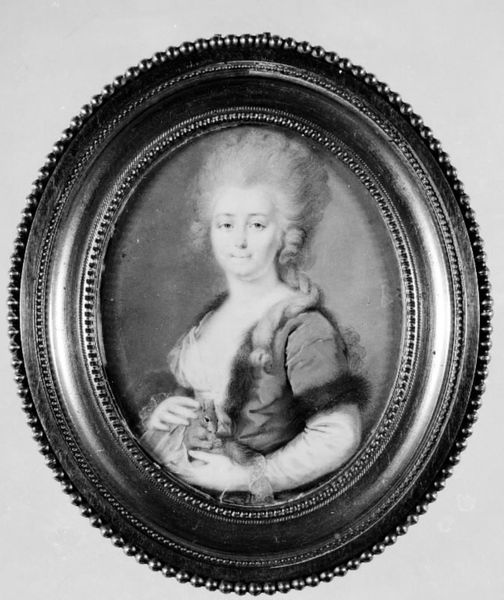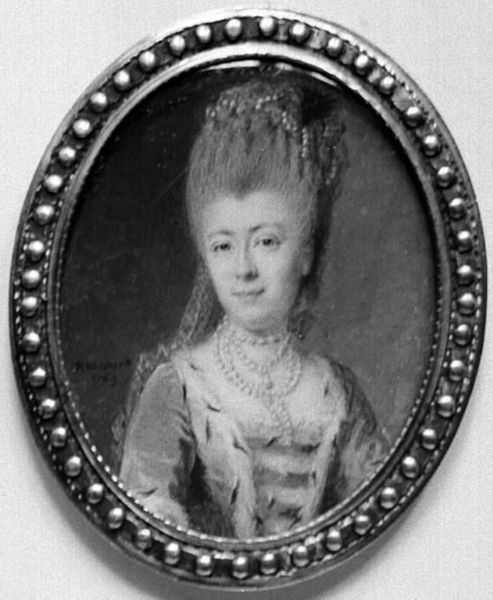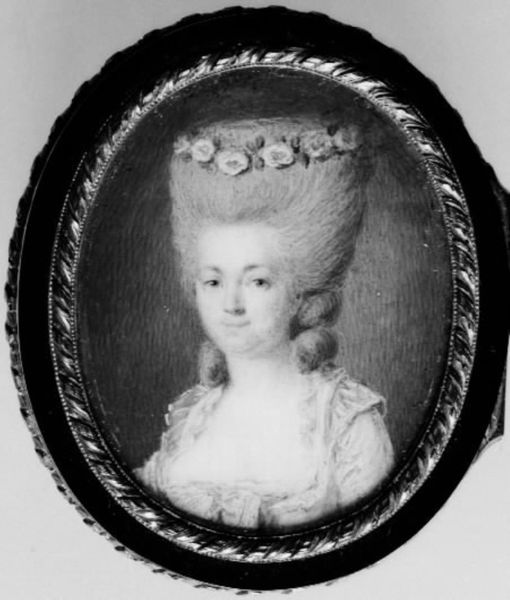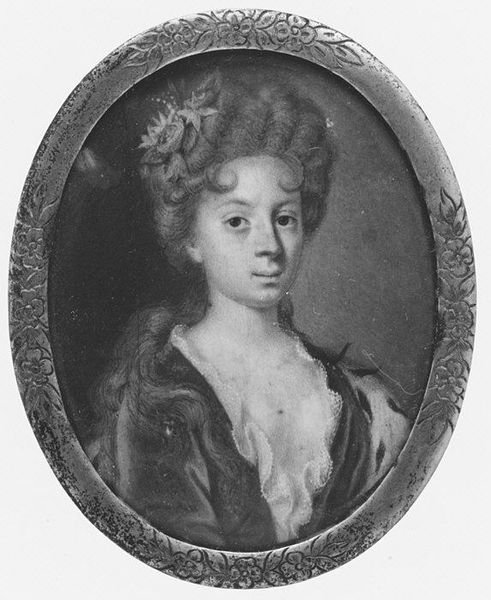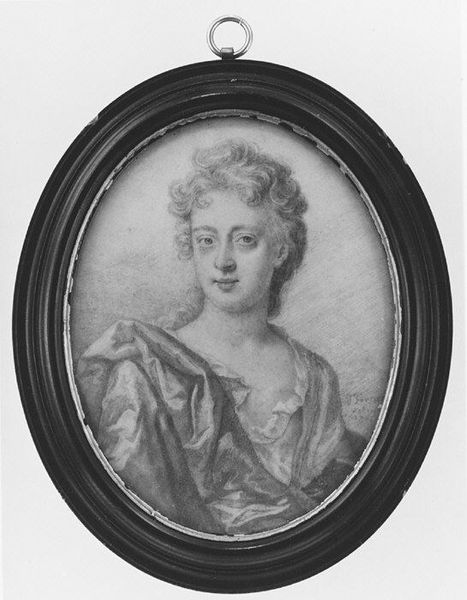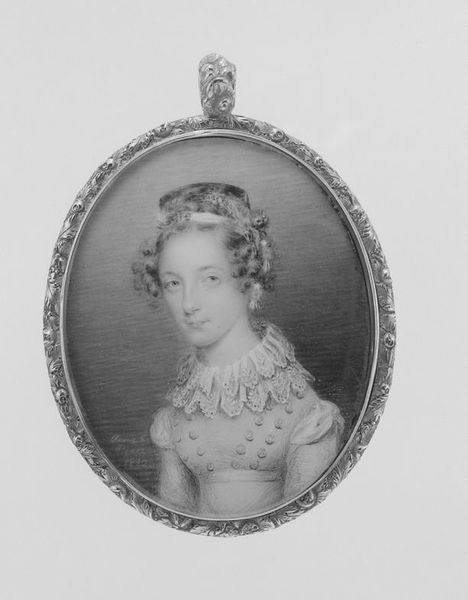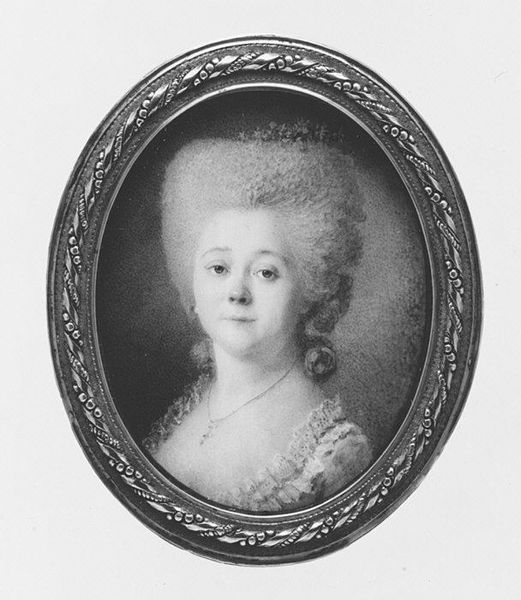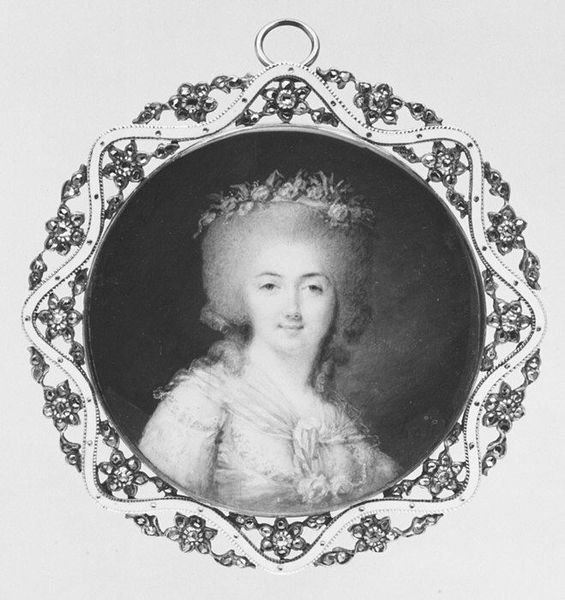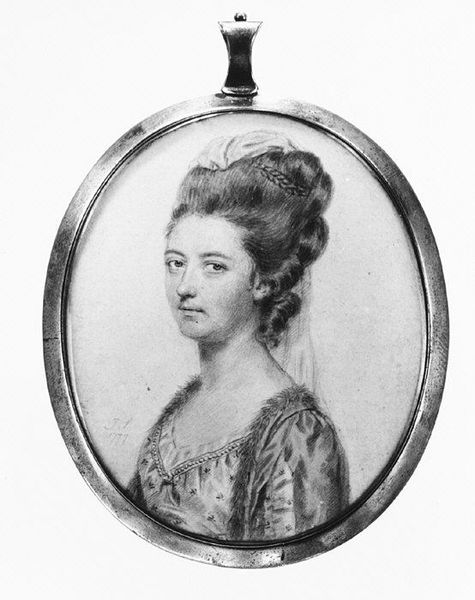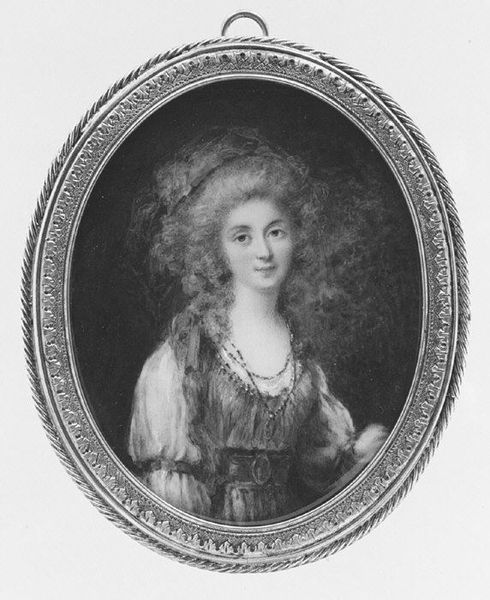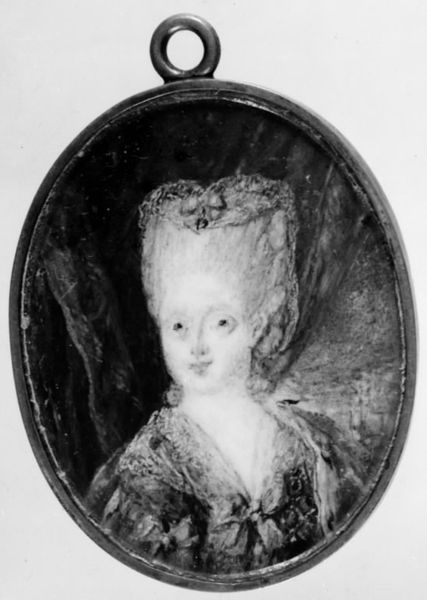
A Woman, Possibly Sophia Dorothea (1687–1757), Later Queen of Prussia 1701 - 1711
0:00
0:00
painting
#
portrait
#
baroque
#
painting
#
northern-renaissance
#
realism
Dimensions: Oval, 2 x 1 3/4 in. (52 x 45 mm)
Copyright: Public Domain
Editor: This delicate portrait, “A Woman, Possibly Sophia Dorothea, Later Queen of Prussia” by Benjamin Arlaud, created sometime between 1701 and 1711, captures its subject in oil paint. The woman's gaze seems so direct and self-assured; I’m curious to hear your take on it. How do you interpret this work, especially given the subject’s royal status? Curator: It’s crucial to view this portrait within the complex power dynamics of the early 18th century. The subject's gaze, as you noted, certainly projects authority, but it’s a carefully constructed image meant to legitimize and perpetuate the Hohenzollern dynasty. This was a time when a woman’s primary role was still seen as providing dynastic succession, wasn’t it? Consider what pressures Sophia Dorothea faced. Editor: Definitely, she was under intense pressure to produce an heir and maintain alliances through marriage. How do we see this reflected in the portrait beyond just her confident stare? Curator: The portrait’s presentation within the ornate, almost cage-like frame is very telling. It's opulent, signalling status and wealth, but the frame’s restrictive quality subtly mirrors the constraints placed upon noble women of the era, specifically the expectations to embody virtue and uphold social order, wouldn’t you agree? And how does this relate to her reputation as a later adulteress? Editor: Ah, that's a really fascinating perspective. I hadn't thought about the framing in that way. Her scandal threatened the very foundation of the Prussian monarchy. Curator: Precisely. This portrait, in that context, takes on a whole new dimension, highlighting the impossible standards aristocratic women had to meet and the devastating consequences when they didn't. Editor: Thank you, I will now never look at this work the same way! Considering all the elements, especially Sophia's complicated life and station, allows me to think about this portrait's importance through a modern intersectional lens. Curator: Exactly, looking at art and cultural markers such as this are excellent keys for unlocking a different social conscious that existed.
Comments
No comments
Be the first to comment and join the conversation on the ultimate creative platform.

